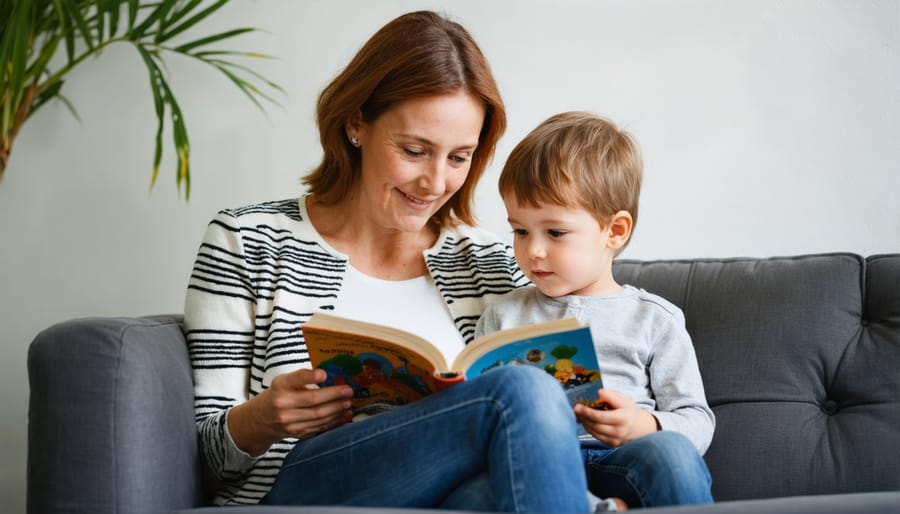
Every parent’s journey is unique, yet understanding different parenting styles can transform how we connect with our children and shape their future. Beyond just the traditional authoritarian or permissive approaches, modern parenting encompasses a rich spectrum of strategies that blend both time-tested wisdom and contemporary essential parenting skills.
Whether you’re navigating the delicate balance of gentle parenting or exploring the structured approach of positive discipline, your chosen style profoundly impacts your child’s emotional well-being, social development, and future relationships. Today’s parents face unique challenges – from digital distractions to evolving social dynamics – making it more crucial than ever to understand these nine distinct parenting approaches.
What makes this exploration particularly valuable is how each style adapts to different family dynamics, cultural backgrounds, and individual child temperaments. By understanding these various approaches, you’ll discover not just theoretical frameworks, but practical tools to create a nurturing environment that aligns with your family’s values and your children’s needs.
Let’s explore these nine parenting styles together, examining how each one might resonate with your family’s unique situation and help you build stronger, more meaningful connections with your children.
Attachment Parenting: Building Strong Emotional Bonds

My Journey with Baby-Wearing and Co-Sleeping
When I first learned about attachment parenting, I was both intrigued and slightly overwhelmed. The thought of wearing my baby throughout the day and sharing sleep space seemed challenging, but I decided to give it a try. Starting with a simple wrap carrier when my daughter was two weeks old, I discovered a whole new way of connecting with her.
Those early days of baby-wearing were transformative. Not only did it free up my hands to accomplish daily tasks, but I also noticed how content my daughter became when snuggled close to my chest. The gentle swaying of my movements seemed to soothe her instantly, and I found myself getting more done while maintaining that precious skin-to-skin contact.
Co-sleeping was another journey that evolved naturally for us. What began as occasional bedsharing during nighttime feedings developed into a beautiful nighttime routine. The ease of nursing while lying down and the comfort of having my baby within arm’s reach made those midnight wakings much more manageable.
Looking back, these practices strengthened our bond in ways I hadn’t expected. While attachment parenting isn’t for everyone, it’s been a beautiful fit for our family.
Positive Parenting: Communication is Key

When Time-Outs Became Time-Ins
Picture Sarah, a mom of three, who used to send her 4-year-old to the “naughty corner” whenever he had a meltdown. One particularly challenging day, instead of the usual time-out, she tried something different. When Tommy started crying over a broken toy, Sarah sat down beside him and simply said, “I see you’re feeling upset. Would you like a hug?”
This simple shift from isolation to connection transformed their relationship. Rather than leaving Tommy alone with his big emotions, Sarah created a safe space for him to process his feelings. She noticed that not only did the tantrums decrease, but Tommy began coming to her proactively when he felt overwhelmed.
The concept of “time-in” focuses on co-regulation – helping children manage their emotions through supportive presence rather than punishment. It’s about teaching emotional intelligence while maintaining boundaries. Sarah still sets clear limits, but now she does it while staying connected. “Instead of sending him away,” she shares, “we work through difficult moments together, and it’s made all the difference in our home.”
Authoritative Parenting: Finding the Sweet Spot
Setting Boundaries While Maintaining Connection
As a mom of two energetic kids, I’ve learned that setting boundaries while maintaining connection is one of the most valuable practical parenting strategies I’ve implemented. When my daughter wanted to stay up late watching videos, instead of simply saying “no,” I sat with her and explained why sleep is important for her growing body. We agreed on a reasonable bedtime together, and I created a special wind-down routine that included reading together.
Similarly, when my son struggled with homework time, we established clear guidelines while keeping the atmosphere supportive. We set up a cozy homework station and agreed that screens would be off during study time, but he could choose his preferred study schedule within certain hours. This approach helped him feel heard while maintaining necessary structure.
The key is finding that sweet spot between firm boundaries and emotional availability. When children understand the reasoning behind rules and feel involved in the process, they’re more likely to cooperate and maintain a positive relationship with you.
Gentle Parenting: Embracing Emotions
Navigating Tantrums with Compassion
I’ll never forget the day my three-year-old daughter had an epic meltdown in the grocery store. There she was, sprawled on the floor between the cereal boxes and breakfast bars, crying because I wouldn’t buy the sugary cereal with her favorite cartoon character on it. Instead of immediately reacting with frustration, I took a deep breath and remembered what my parenting coach had taught me about emotional regulation.
I knelt down to her level, acknowledged her feelings, and calmly said, “I see you’re really upset. It’s okay to feel disappointed.” This simple act of validation helped her feel heard. We sat there together for a moment, drawing curious glances from other shoppers, but I remained focused on connecting with her rather than worrying about others’ judgment.
Gradually, her sobs subsided, and we were able to talk about making healthy choices together. This experience taught me that responding to tantrums with compassion not only helps our children learn emotional regulation but also strengthens our parent-child bond in meaningful ways.

Free-Range Parenting: Fostering Independence
Finding Balance Between Freedom and Safety
As a mom of three, I’ve experienced firsthand the delicate balance between giving children independence and ensuring their safety. One summer, I let my 10-year-old walk to the neighborhood park alone for the first time. While my heart raced a bit, I knew this small step toward independence would build her confidence and decision-making skills.
Many parents are embracing elements of free-range parenting while maintaining reasonable safety measures. Sarah Thompson, a child development expert, suggests starting with “independence zones” – areas where children can roam freely within set boundaries. This might mean letting your child play in the front yard unsupervised or walk to a friend’s house on your street.
The key is to gradually expand these zones as your child demonstrates responsibility and good judgment. For instance, you might begin with backyard play, progress to walking to school with friends, and eventually allow solo trips to local stores. Remember to teach essential safety skills, like road safety and what to do in emergencies, while encouraging exploration and independence. This balanced approach helps children develop resilience while giving parents peace of mind.
Conscious Parenting: Mindful Approaches
Conscious parenting represents a thoughtful evolution in child-rearing, focusing on self-awareness and emotional connection. As a mom who’s explored various mindful approaches to parenting, I’ve discovered that this style encourages us to pause, reflect, and respond rather than react to our children’s behaviors.
At its core, conscious parenting involves understanding our own triggers and emotional patterns while being fully present with our children. Instead of enforcing strict rules or letting everything slide, we create meaningful boundaries while acknowledging our children’s feelings and needs.
Picture this: Your toddler has a meltdown at the grocery store. Rather than immediately scolding or giving in, conscious parenting invites you to take a breath, connect with your child’s experience, and guide them through their emotions while maintaining necessary limits.
This approach helps develop emotional intelligence in both parent and child, fostering deeper understanding and stronger relationships. It’s not about being perfect – it’s about growing together, learning from mistakes, and creating a more mindful family dynamic.

Tiger Parenting: High Expectations
Tiger parenting, made famous by Amy Chua’s “Battle Hymn of the Tiger Mother,” emphasizes academic excellence and exceptional achievement. While this style can lead to impressive results, it’s essential to understand both its benefits and challenges.
I remember chatting with Sarah, a mom whose daughter excelled in both piano and academics under this approach. “It’s about believing in your child’s potential,” she shared. “But you need to know when to push and when to step back.”
Tiger parents typically set high expectations, maintain strict schedules, and prioritize educational success. This might mean limiting social activities and entertainment in favor of practice and study time. While this approach can foster discipline and work ethic, it’s crucial to balance achievement with emotional well-being.
Modern tiger parenting has evolved to be more nuanced than its traditional stereotype. Today’s achievement-oriented parents often combine high expectations with emotional support and open communication. The key is to encourage excellence while still nurturing your child’s individual interests and maintaining a supportive family environment.
Consider your child’s personality and needs when incorporating elements of tiger parenting. Some children thrive under structured expectations, while others may need more flexibility to flourish.
Unconditional Parenting: Love Without Conditions
Imagine showing love to your child not because they’ve earned it, but simply because they exist. That’s the heart of Alfie Kohn’s unconditional parenting philosophy, which challenges traditional reward-and-punishment approaches to raising children.
As a mom who’s explored this style, I’ve learned that unconditional parenting means moving beyond “good job!” and sticker charts. Instead, it focuses on nurturing our children’s intrinsic motivation and emotional security. When my daughter struggled with math, rather than offering rewards for good grades, we explored why she found it challenging and worked together to find solutions she felt comfortable with.
This approach encourages parents to avoid using their love as a tool for behavior modification. That means no time-outs, no “I’m disappointed in you,” and no withdrawal of affection when children misbehave. Instead, we’re invited to connect with our children during difficult moments, understand their perspectives, and guide them while maintaining our unconditional support.
While it might seem permissive at first glance, unconditional parenting actually helps children develop stronger emotional intelligence and self-motivation. They learn to make good choices not to earn our approval, but because they understand the value of those choices.
As we’ve explored these different parenting styles, one thing becomes crystal clear: there’s no one-size-fits-all approach to raising children. Every family is unique, with its own set of values, challenges, and dynamics. What works beautifully for one family might not resonate with another, and that’s perfectly okay!
Think of parenting styles as tools in your toolkit rather than rigid rules to follow. You might find yourself naturally gravitating toward certain aspects of authoritative parenting while incorporating elements of gentle parenting that align with your family’s needs. The key is to remain flexible and understanding, both with yourself and your children.
Remember, your parenting journey is exactly that – a journey. It’s okay to adapt and evolve your approach as your children grow and as you learn more about what works best for your family. Some days you might feel like you’ve got it all figured out, while others might leave you questioning everything – and that’s all part of the beautiful chaos of parenthood.
The most important thing isn’t which style you choose, but rather that you’re parenting with intention, love, and awareness. Trust your instincts, stay informed, and don’t be afraid to adjust your approach when needed. After all, the best parenting style is the one that helps your children thrive while maintaining harmony in your home.



